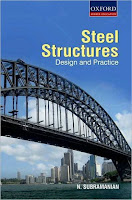Self-Consolidating Concrete: Applying What We Know
 Joseph A. Daczko ... 304 pages - Publisher: CRC Press; (February, 2012) ... Language: English - ISBN-10: 0415590647 - ISBN-13: 978-0415590648
Joseph A. Daczko ... 304 pages - Publisher: CRC Press; (February, 2012) ... Language: English - ISBN-10: 0415590647 - ISBN-13: 978-0415590648Self-consolidating concrete (SCC) is an innovative material used successfully throughout the world. It is a highly flowable, non-segregating concrete that can spread into place, fill the formwork, and encapsulate the reinforcement without any mechanical consolidation, improving the overall efficiency of a concrete construction project. SCC mixtures are highly fluid, yet their flowing properties can be adapted for a range of applications and allow practitioners to select and determine levels of filling ability, passing ability, and stability. Self-Consolidating Concrete: Applying What We Know discusses all aspects of SCC, including: Benefits and limitations + Raw material components + Mixture proportions + Production and quality control + Placement and curing. Presenting a basis for consistently producing and applying SCC in a regular production environment, this book is written from the perspective of the concrete practitioner. It uses descriptions and case studies throughout, as examples of specific types of applications, to identify where the practitioner needs to focus attention. This book bridges the gap between research and practice. It links science with practical application, describing a number of projects and types of applications where SCC has been used successfully. It will be useful for new practitioners as well as for those already using SCC.




